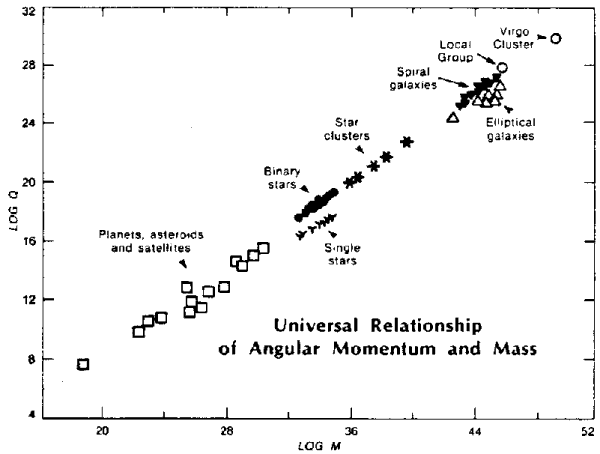 |
Science Frontiers ONLINE No. 24: Nov-Dec 1982 |
|
|
The spin we're in
From planets to stars to entire galaxies, the rate of spin is related to mass. If one defines Q (see graph) as angular momentum divided by the object's mass and a density factor, it is roughly equal to the object's (mass)0.7 . Such empirical equations are generally accurate only over a limited region, but this newly discovered relationship holds for almost 50 orders of magnitude. For some unfathomed reason, all astronomical entities spin at rates determined by their masses. Even clusters of galaxies fall into step, slowly pirouetting in intergalactic space to some unknown tune.
(Anonymous; "How Things Spin," Sky and Telescope, 64:228, 1982.)
Comment. In the foregoing item, a team of investigators reported that the entire cosmos may spin. Does the cosmos, too, obey this new momentum-mass formula?
